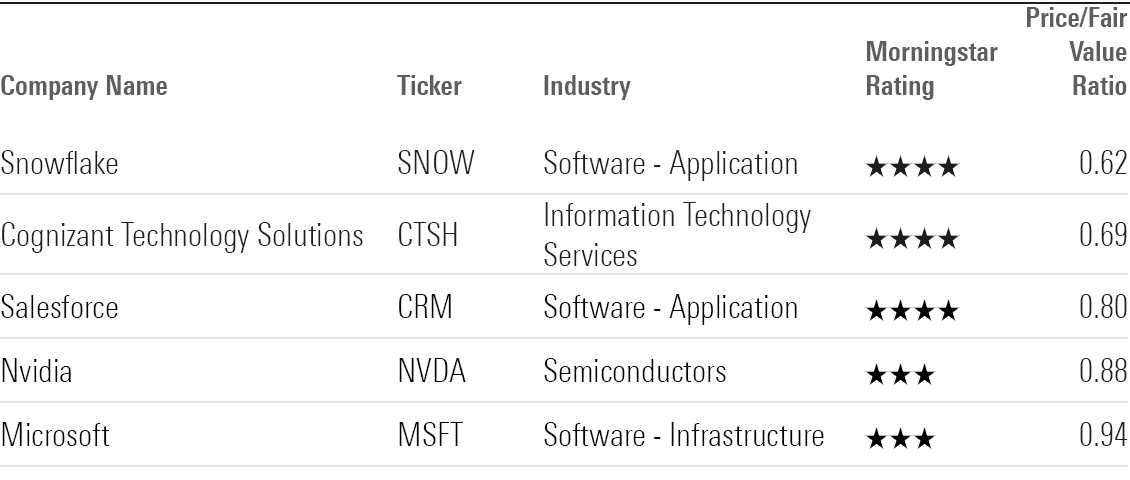The price and cost of AI-based stock predicting/analyzing trade platforms are important in order to avoid unanticipated costs or hidden fees. Pricing structures can differ widely, and understanding the price you're paying is essential to make an informed decision. Below are the top ten tips for evaluating the cost and pricing of these platforms:
1. Know Pricing Model
Subscription-based: Check whether the platform has an annual or monthly fee and what features are available on each level.
Pay-per-use: Verify whether the platform charges you according to the amount of usage (e.g. the number of trades, data requests or even predictions).
Freemium-model: Examine whether it provides an initial free version with only a few functions and costs for premium features.
2. Compare Pricing Tiers
Overview of features: See what features are included in each pricing the tier (e.g. basic, professional, or enterprise).
Scalability: Make sure that the pricing tiers are in line to your requirements, regardless of whether you're a trader on your own, professional, or part of an institution.
Upgrade flexibility: See if it is feasible to upgrade or lower the plan based on your changing requirements.
3. Evaluate Hidden Costs
Data fees - Determine if the platform charges an extra cost to access the most valuable data (e.g. data in real time and advanced analytics).
Brokerage fees Check to see if the platform has additional charges for trading or integrate with brokers.
API usage - Assess whether there are additional costs associated with API access and/or high-frequency usage.
4. Demos as well as Free Trials, and Test Drives
Trial period: Search for platforms that provide an opportunity to try a trial or demo to test their features prior to committing.
Trial limitations: Make sure to check whether the trial you are using is included in all of the features, or if it is restricted in its functionality.
There are no-commitment options. Ensure that you have the option to cancel your trial without having to pay if the platform doesn't meet your requirements.
5. Find discounts and special offers
Annual discounts: Find out whether the platform provides discounts for annual subscriptions as compared to monthly plans.
Referral programs. Check if the platform offers discounts or credits for referring users.
Request pricing for institutional customers If you're part of an enterprise with many employees.
6. Calculate the Return on the investment
Cost and. value: Assess whether the platform's features and forecasts are worth the price. For instance, can it aid you in making better trading decisions or help you save time?
Performance track record Review the platform's rates of success or user feedback to determine the potential ROI.
Costs of alternative: Compare platform cost against the costs of not using the platform (e.g. missed opportunities, time spent manually analyzing).
7. Review, Cancellation, and Refund Policies
The cancellation policy should be followed: Ensure you are able to cancel your subscription without penalty or hidden costs.
Check if there is any policy on refunds for subscriptions you've not used.
Auto-renewal : Find out if your subscription is automatically renewed by the platform and find out how you can opt out.
8. Examine Transparency of Pricing
Price page that is clearly written Make sure that the platform is equipped with a clear and up-to-date pricing page that is free of hidden charges.
Customer Support: Contact Customer Service for clarification of any pricing information that is unclear or extra cost.
Contract terms: Review the conditions of service to be aware of the long-term commitments and penalties.
9. Compare to Competitors
Comparing the features and prices of the platforms against those of their competitors can help you find the best price.
User reviews: Read the feedback of users to see if others feel that the platform is worth the price.
Check the market positioning of the platform. Does it meet your expectations?
10. Evaluate Long-Term Costs
Price increases: Find out if there is a pattern of price rises and how often they occur.
Feature additions: Assess whether you have new features in your current plan, or need an upgrade.
Scalability costs: Ensure the pricing of your platform is reasonable when your trading or data requirements increase.
Bonus Tips
Test multiple platforms. You can test multiple platforms for free, and then compare them.
Negotiate price: If you own an institution or you're a heavy user, it's worth seeking out discounts or custom pricing.
There are many platforms that offer educational tools and resources for no cost.
By following these tips to evaluate the costs and prices of AI stock predicting/analyzing trading platforms, ensuring you choose one that's within your budget and offers the features and performance you want. A well-balanced platform will provide you with the best of both worlds in terms of affordability and functional. See the most popular ai stock market info for more advice including ai for trading, ai for investing, ai stock trading, ai for investing, ai trading, ai stock trading bot free, ai trading tools, market ai, best ai stock trading bot free, ai investing platform and more.

Top 10 Tips For Evaluating The Maintenance And Updates Of Ai Stock Predicting/Analyzing Platforms
To ensure that AI-driven platforms for stock predictions as well as trading safe and effective, it is essential that they be regularly updated. These are the top 10 suggestions to assess their update and maintenance practices:
1. Updates will be posted frequently.
Verify the frequency of updates on your platform (e.g. weekly, monthly, or even quarterly).
What is the reason? Regular updates indicate active development and responsiveness of market developments.
2. Transparency in Release Notes
Tips: Read the release notes on your platform to learn about any changes or improvements.
Release notes that are transparent demonstrate the platform's commitment towards continuous advancement.
3. AI Model Retraining Schedule
Tips: Find out how often the AI models are trained with fresh data.
What is the reason? Markets fluctuate and models have to be re-evaluated to maintain the accuracy.
4. Fixes for bugs and issue resolution
Tips Determine the speed at which a platform responds to bugs reported by users or fixes technical issues.
The reason: Quick fix for bugs ensure that the platform remains reliable and operational.
5. Updates on Security
TIP: Find out if the platform updates its security protocols on a regular basis to ensure the security of data of traders and users.
The reason: Cybersecurity is essential for financial platforms in order to avoid breaches and fraud.
6. Integration of New Features
Tip: See the latest features introduced by the platform (e.g. advanced analytics and data sources.) in response to feedback from users or market trends.
The reason: New features show responsiveness and innovation to user demands.
7. Backward Compatibility
Check to ensure that the updates won't affect existing functionality, or require substantial reconfiguration.
Why? Backward compatibility is essential to provide smooth user interface transitions.
8. Communication between Maintenance and User Personnel
Tips: Examine how the platform communicates scheduled maintenance or downtimes to users.
Clare communication reduces interruptions and increases trust.
9. Performance Monitoring and Optimisation
Make sure that your platform is constantly checking performance metrics, like accuracy and latency and if it is optimizing its system.
Why: Constant optimization ensures that the platform is effective and expandable.
10. The compliance with regulatory Changes
Tips: Check if the platform is updating its policies and features to comply with new financial regulations or data privacy laws.
The reason: Compliance with regulations is vital to minimize legal liabilities and to maintain the trust of users.
Bonus Tip: Integration of user feedback
Verify that the platform active in incorporating feedback from users into maintenance and updates. This shows an approach that is based on user feedback and a commitment to improving.
By evaluating the above aspects and other aspects, you'll be able to determine whether or you are able to determine whether or AI trading and stock prediction platform that you choose is maintained, up-to-date, and capable of adapting to market dynamics. View the top rated best ai stock prediction for site recommendations including best ai stocks, stock trading ai, ai stock analysis, ai copyright signals, best ai stocks, best ai trading platform, stock trading ai, invest ai, can ai predict stock market, best ai stock prediction and more.
